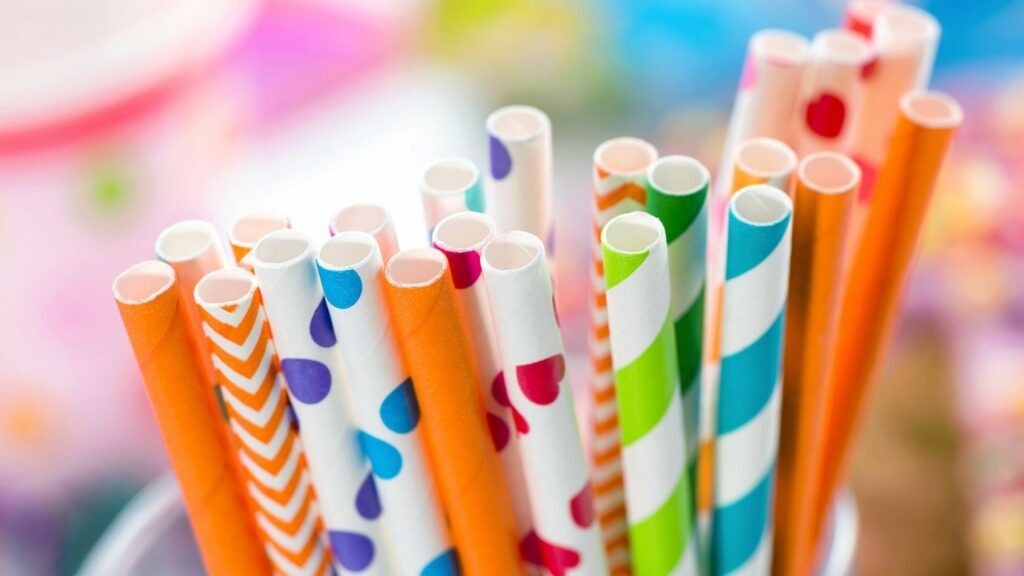Sip Sustainably The Best Eco-Friendly Disposable Tableware & Types of Drinking Straws

Have you ever stopped to think about what happens to all those disposable plates, cups, and straws after the party’s over? Most of them end up sitting in landfills or floating in our oceans for centuries. Thankfully, there’s a better way. Eco-friendly disposable tableware made from bamboo, wood, and paper is a simple swap that can do wonders for the environment — and it’s easier than you might think to make the change.
Why Go Eco-Friendly With Tableware?
Single-use plastics have been convenient for decades, but they come with a heavy price. Every plastic fork or straw you toss away sticks around long after you’re done with your meal. Plastic doesn’t biodegrade — it just breaks down into tiny microplastics that pollute our soil, rivers, and oceans. By choosing tableware made from natural materials, you’re taking a stand against unnecessary waste. It’s not just about feeling good — it’s about doing good.
The Benefits of Bamboo, Wood, and Paper Tableware
So, why are bamboo, wood, and paper tableware options so much better? For starters, they’re made from renewable resources. Bamboo grows insanely fast — some species shoot up nearly three feet in a day! Wood used for tableware often comes from sustainably managed forests, and paper products can be made from recycled content. On top of that, these materials naturally break down over time. When composted properly, they return nutrients back to the soil instead of piling up in landfills.
Types of Eco-Friendly Disposable Tableware
A green picnic or party doesn’t mean you have to ditch all the conveniences you love. Let’s break down the main pieces you might need, and how you can swap each one for a better option.
Disposable plates made from bamboo or palm leaves are sturdy enough to handle everything from a leafy salad to a juicy steak. They won’t get soggy like some paper plates, and they add a rustic, natural vibe to any table setting. Some brands craft these plates by pressing fallen palm leaves — no trees cut down, no chemicals added.
Whether it’s chili in winter or ice cream in summer, you’ll want a good bowl. Bamboo fiber bowls and paper bowls with plant-based linings are great picks. They’re durable enough for hot soups but compostable once you’re done slurping.
Plastic forks and knives are the bane of beach clean-ups everywhere. Switching to bamboo or wooden cutlery is a breeze. They’re lightweight, splinter-free, and often come in cute compostable wrappers. After your meal, just toss them in the compost or green bin.
Paper cups have come a long way. Many now have biodegradable or plant-based linings instead of petroleum-based ones. They’re perfect for coffee, tea, or cold drinks. Some cups are even made entirely of bamboo fiber for extra eco points.
Don’t forget napkins! It’s easy to swap traditional bleached paper napkins for ones made from recycled paper or bamboo pulp. They’re soft, strong, and break down fast — no guilt if one or two fly off your picnic table.
Deep Dive Into Types of Drinking Straws
Now, let’s talk about one tiny thing that makes a massive difference: types of drinking straws. You wouldn’t think such a small item could cause so many problems, but millions of plastic straws are thrown away every single day. They’re one of the top items found during beach cleanups because they’re too small to recycle in many facilities. If you’ve decided to ditch plastic, the next step is knowing your options when it comes to types of drinking straws.
Why Straws Matter
Think about the last time you had an iced coffee or a smoothie. Did you use a straw? Chances are, yes. We don’t really need them, but they’ve become so common we don’t think twice. Unfortunately, marine animals like turtles and seabirds often mistake tiny plastic straws for food. A single straw can injure or even kill them. By making a small switch, you’re helping protect countless creatures and keep our oceans cleaner.
Paper Straws
Paper straws are probably the most well-known alternative. They’ve popped up everywhere from coffee shops to fast-food chains. They’re cheap, colorful, and break down much faster than plastic. Some people don’t love that they can get soggy after a while — but if you drink your beverage within a reasonable time, you’ll barely notice. Plus, they come in cute patterns that add a fun touch to your drink!
Bamboo Straws
If you want something that feels a little more upscale, bamboo straws are a fantastic option. They’re reusable, made from natural bamboo stalks, and each one looks slightly unique. Bamboo straws don’t add any taste to your drink, and with proper care, they can last for months. After using them, just rinse them out or use a straw brush to keep them fresh.
Wheat Straws
Wheat straws are the new kid on the block. They’re made from leftover wheat stems after the grain is harvested — a byproduct that used to go to waste. They’re naturally compostable, sturdy, and won’t get mushy like paper straws. Best of all, they look just like regular plastic straws but break down without harming the planet.
Stainless Steel & Glass Straws
Sometimes, disposable isn’t the answer. For at-home use, stainless steel or glass straws are a chic and practical choice. Stainless steel straws are durable, easy to clean, and often come with little brushes to keep the inside spotless. Glass straws add a classy touch to cocktails and iced coffees — plus, they’re surprisingly strong. Just pop them in the dishwasher when you’re done.
How To Choose The Right Straw For You
Not sure which straw to choose? It depends on your lifestyle. If you host lots of parties and want a disposable option, paper or wheat straws are your best bet. If you’re looking for something reusable for everyday use, bamboo, stainless steel, or glass straws might suit you better. Some people even keep a reusable straw in their bag or car, so they’re never stuck using plastic again.
How To Dispose Of Eco-Friendly Straws Properly
Making the switch is just half the battle — knowing how to dispose of your straws is just as important. Paper and wheat straws can usually go in your compost bin. Bamboo straws should be composted when they wear out. For reusable straws like stainless steel or glass, just keep washing and using them — they can last for years with proper care. If they break, check with your local recycling program to see if they’ll take them.
Tips For Hosting A Sustainable Event
Planning a birthday bash or family BBQ? Hosting sustainably doesn’t have to be complicated or expensive. Use bamboo plates and wooden cutlery instead of plastic ones. Set up separate bins for trash, recyclables, and compost — and label them clearly so your guests know what goes where. Swap single-use plastic cups for paper ones or even reusable tumblers. And of course, offer paper or bamboo straws instead of plastic. These little tweaks add up to big change.
Top Brands Offering Eco-Friendly Tableware
Not sure where to start shopping? A few brands make going green easy. Eco-Products offers everything from compostable plates to biodegradable straws. Bambu is well-known for its elegant bamboo cutlery and tableware. Repurpose creates stylish, plant-based cups and plates that look great at any gathering. World Centric makes a wide range of compostable products, and Green Paper Products has plenty of budget-friendly options too.
Where To Buy Sustainable Tableware
Finding eco-friendly tableware is easier than ever. Many local grocery stores carry compostable options in their party aisle. Zero-waste shops are popping up in cities worldwide, often offering discounts for buying in bulk. Online marketplaces like Amazon or Etsy have tons of options, from small businesses to big brands. Buying directly from the manufacturer’s website can sometimes save you money and ensure you’re getting the real deal.
Conclusion
Switching to eco-friendly disposable tableware made from bamboo, wood, and paper is one of the simplest ways to cut down on waste. Next time you plan a picnic, office party, or just sip your favorite iced drink, remember that your choice of straw — yes, even that tiny piece — can help protect the planet. When it comes to the types of drinking straws you choose, every sip counts.



